

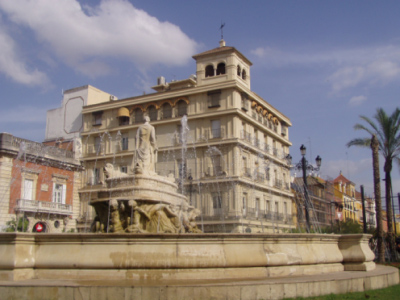 |
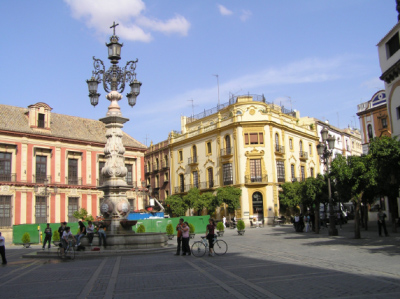 |
|
Upon our return to Spain we went to Seville, one of the prettiest cities in the country.
|
||
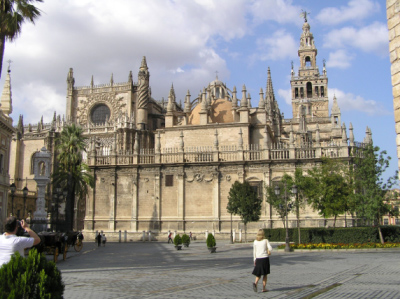 |
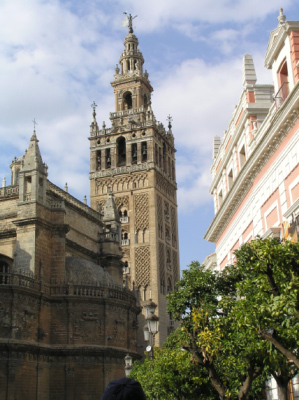 |
|
|
The Cathedral in Seville dominates the old quarter of the city. It is the third largest (in volume) in Europe, after St. Peter's in Rome and St. Paul's in London.
|
The Giralda tower of the Cathedral is one of three (the others are the Koutobia Tower in Marrakech and the Hassan Mosque in Rabat) that are designed to be similar in appearance. |
|
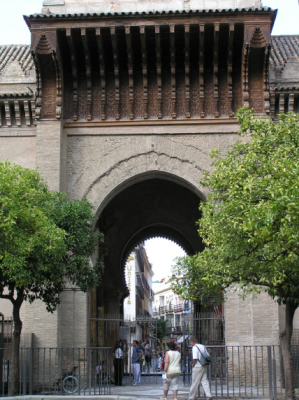 |
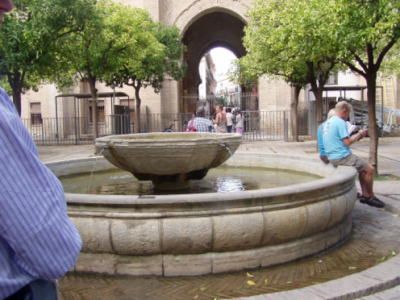 |
|
| The gateway to the Cathedral shows the Muslim influence in the architecture. | The fountain pre-dates the Muslim era, as it goes back to Visigothic times.
|
|
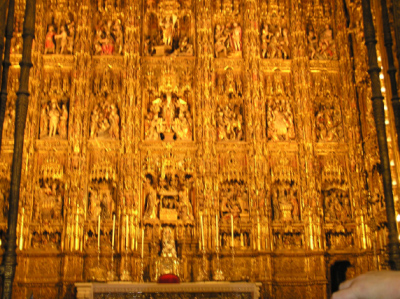 |
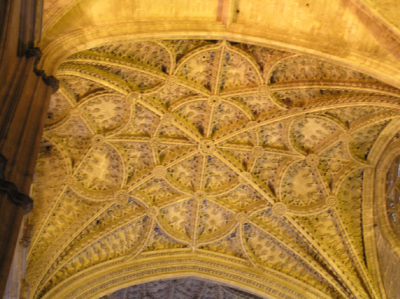 |
|
| The altarpiece is covered in gold leaf. | The stone tracery on the ceilings is intricately carved.
|
|
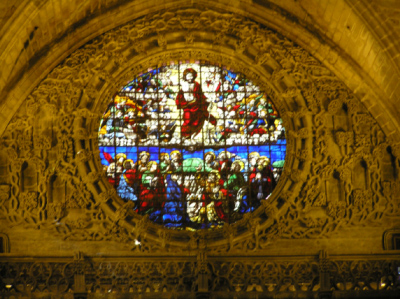 |
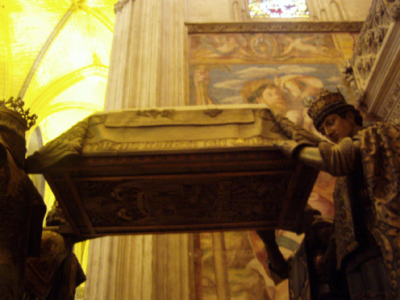 |
|
The combination of stained glass and stonework created some amazing walls.
|
The Cathedral houses the bones of Christopher Columbus, which were entombed in at least two other countries before reaching Seville. | |
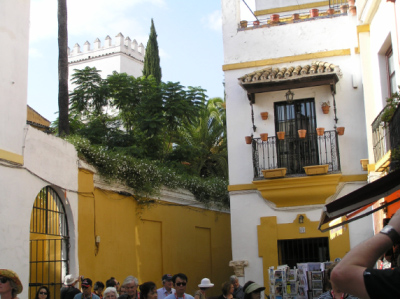 |
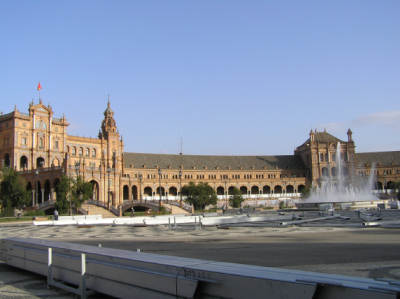 |
|
| There were also some very pretty squares around Seville. | The most elaborate square is Spanish Square, a favorite filming and public concert venue.
|
|
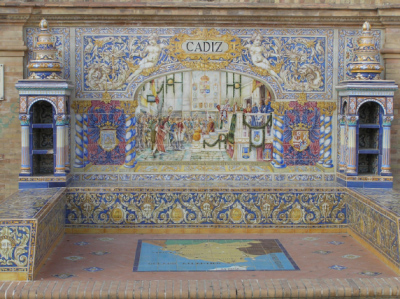 |
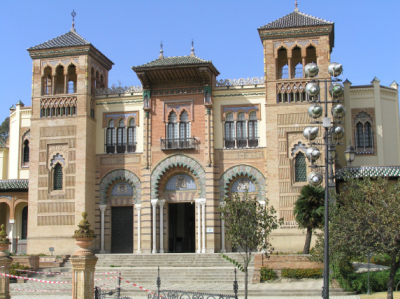 |
|
The tile work at Spanish Square commemorates the various areas of Spain.
|
In the public park the Museum of Folk Arts is typical of the older buildings in the city. | |
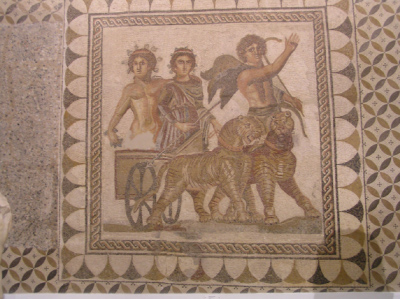 |
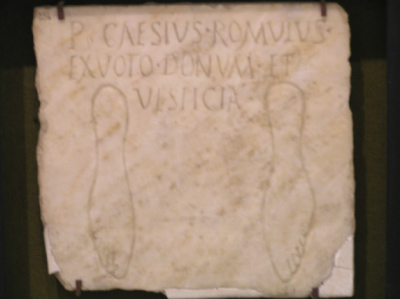 |
|
We visited the Archaeological Museum, which has an exceptional collection of Roman mosaics.
|
Ancient Romans in Spain also dedicated votive footprints to the Goddess--something we had never seen before. | |
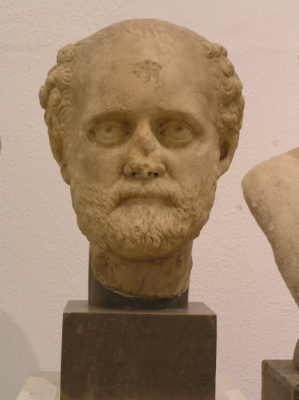 |
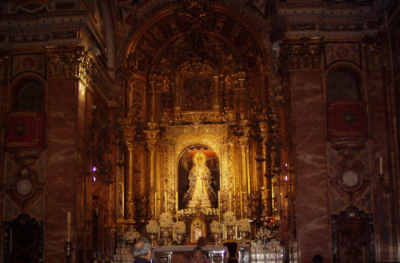 |
|
The glare from this statue head followed us all around the room.
|
The Church of the Macarena (Weeping Virgin) was right around the corner from the hotel--no dancing, please. | |
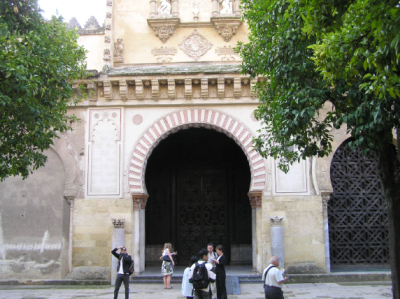 |
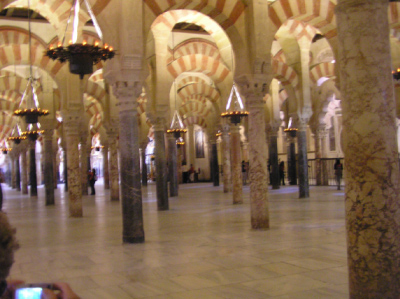 |
|
We also paid a side visit to Cordoba, one of the old capitals.
|
The Mesquita is incredible--a one-time mosque, now a Cathedral, that is just a forest of columns and red-and-white stone. It is amazing to stand and look through it.
|
|
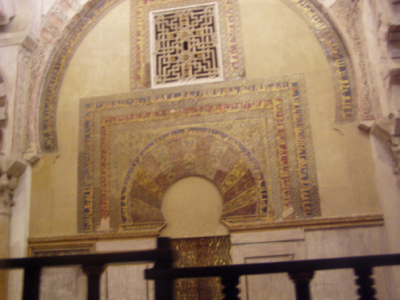 |
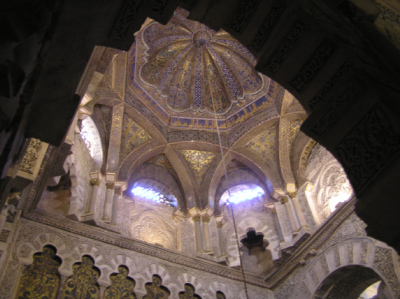 |
|
Many parts of the old mosque remain, along with the original decoration.
|
Other parts are new, having been added for the church, and are also richly decorated. | |
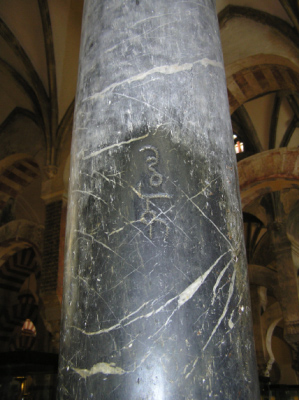 |
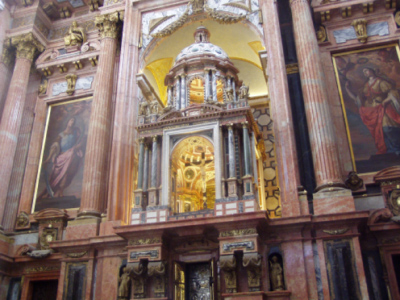 |
|
Some of the workmen who built the mosque carved their names or marks into the pillars that they made.
|
The High Altar of the church is all done in rose marble and gold, matching nicely with the red and white stone of the mosque. | |
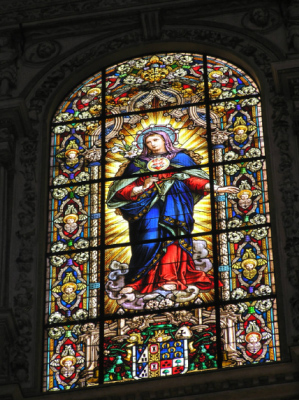 |
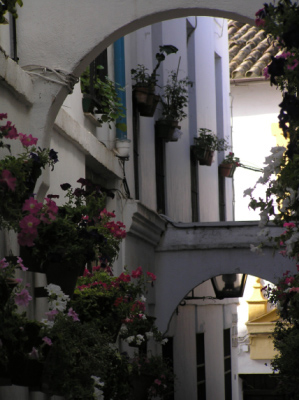 |
|
There were some especially nice stained glass windows here.
|
Outside the Mesquita the streets were pretty and quiet. | |
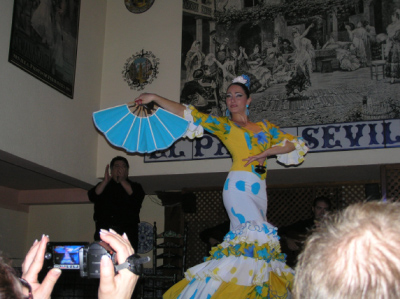 |
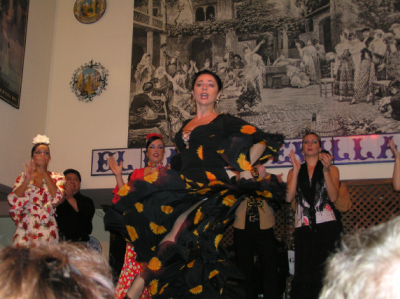 |
|
No visit to Seville would be complete without a flamenco show.
|
The energy level was high and the costumes were colorful. | |
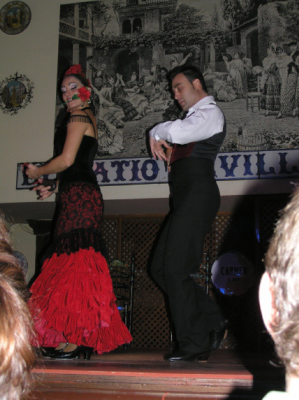 |
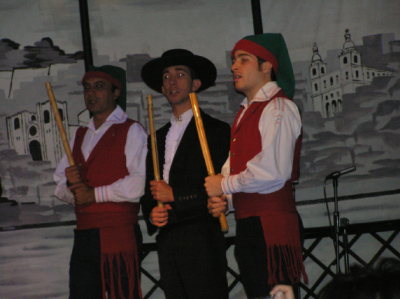 |
|
| The male dancers nearly put their feet through the stage. | The dancers represented several areas of Spain--but where do they wear elf caps? | |